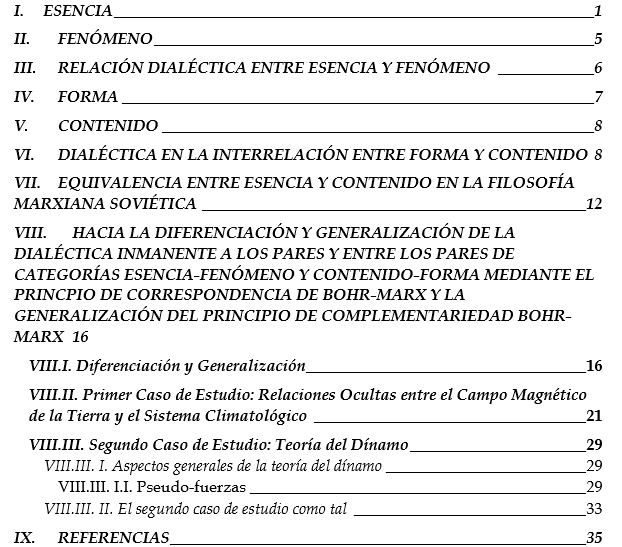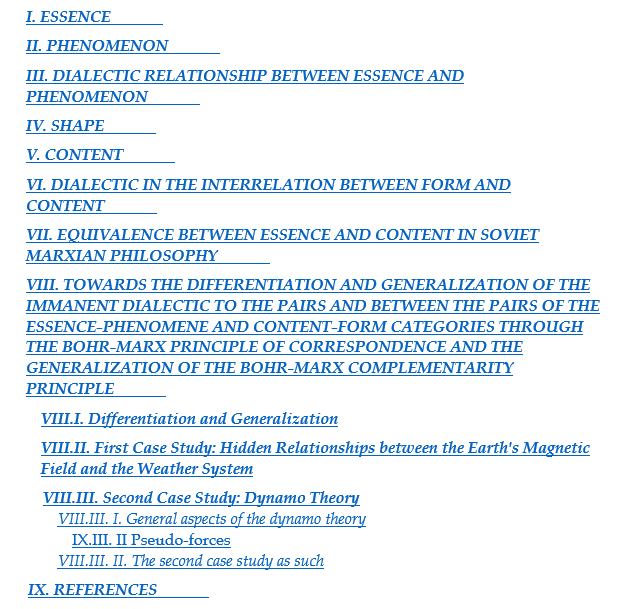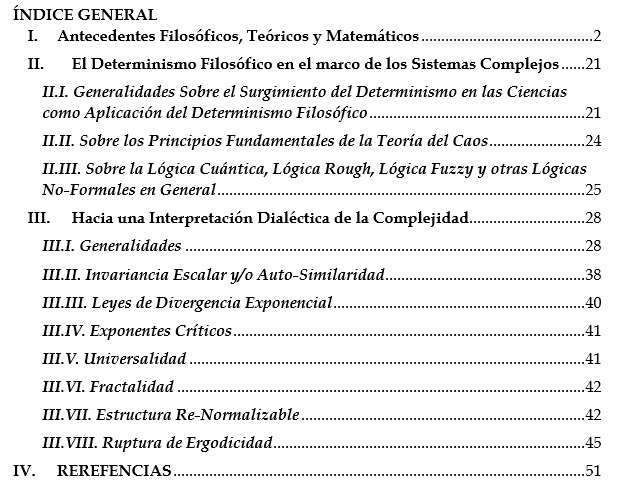ISADORE NABI


REFERENCIAS
Alan. (25 de Julio de 2011). ENGLISH LENGUAGE & USAGE. Obtenido de Stack Exchange: https://english.stackexchange.com/questions/35508/difference-between-partly-and-partially#:~:text=Use%20partly%20when%20the%20%22in,it’s%20also%20%22partly%20closed%22.
Andrews, D. W. (1991). An Empirical Process Central Limit Theorem for Dependent Non-identically Distributed Random Variables . Journal of Multivariate Analysis, 187-203.
Berk, K. (1973). A CENTRAL LIMIT THEOREM FOR m-DEPENDENT RANDOM VARIABLES WITH UNBOUNDED m. The Annals of Probability, 1(2), 352-354.
Borisov, E. F., & Zhamin, V. A. (2009). Diccionario de Economía Política. (L. H. Juárez, Ed.) Nueva Guatemala de la Asunción, Guatemala, Guatemala: Tratados y Manuales Grijalbo.
Cockshott, P., & Cottrell, A. (2005). Robust correlations between prices and labor values. Cambridge Journal of Economics, 309-316.
Cockshott, P., Cottrell, A., & Valle Baeza, A. (2014). The Empirics of the Labour Theory of Value: Reply to Nitzan and Bichler. Investigación Económica, 115-134.
Cockshott, P., Cottrell, A., & Zachariah, D. (29 de Marzo de 2019). Against the Kliman theory. Recuperado el 22 de Marzo de 2021, de Paul Cockshott: http://paulcockshott.co.uk/publication-archive/Talks/politicaleconomy/Against%20the%20Kliman%20price%20theory.pdf
Dedecker, J., & Prieur, C. (2007). An empirical central limit theorem for dependent sequences. Stochastic Processes and their Applications, 117, 121-142.
Díaz, E., & Osuna, R. (2007). Indeterminacy in price–value correlation measures. Empirical Economics, 389-399.
Emmanuel, A. (1972). El Intercambio Desigual. Ensayo sobre los antagonismos en las relaciones económicas internacionales. México, D.F.: Sigloveintiuno editores, s.a.
Farjoun, E., & Marchover, M. (1983). Laws of Chaos. A Probabilistic Approach to Political Economy. Londres: Verso Editions and NLB.
fast.ai. (3 de Diciembre de 2017). How to calculate Weighted Mean Absolute Error (WMAE)? Obtenido de Forums: https://forums.fast.ai/t/how-to-calculate-weighted-mean-absolute-error-wmae/8575
Flaschel, P., & Semmler, W. (1985). The Dynamic Equalization of Profit Rates for Input-Output Models with Fixed Capital. En Varios, & W. Semmler (Ed.), Competition, Instability, and Nonlinear Cycles (págs. 1-34). New York: Springer-Verlag.
Flores Morador, F. (2013). Marx and the Moral Depreciation of Technology: Labor Value as Information. Social Science Research Network Electronic Journal, 1-16. Obtenido de https://internt.ht.lu.se/media/documents/project-778/Marx_and_the_moral_depreciation_of_technology.pdf
Fröhlich, N. (2012). Labour values, prices of production and the missing equalisation tendency of profit rates: evidence from the German economy. Cambridge Journal of Economics, 37(5), 1107-1126.
Glick, M., & Ehrbar, H. (1988). Profit Rate Equalization in the U.S. and Europe: An Econometric Investigation. European Journal of Political Economy, 179-201.
Gloria-Palermo, S. (2010). Introducing Formalism in Economics: The Growth Model of John von Neumann. Panoeconomicus, 153-172.
Godwin, H., & Zaremba, S. (1961). A Central Limit Theorem for Partly Dependent Variables. The Annals of Mathematical Statistics, 32(3), 677-686.
Guerrero, D. (Octubre-diciembre de 1997). UN MARX IMPOSIBLE: EL MARXISMO SIN TEORÍA LABORAL DEL VALOR. 57(222), 105-143.
Investopedia. (23 de Agosto de 2020). The Difference Between Standard Deviation and Average Deviation. Obtenido de Advanced Technical Analysis Concepts : https://www.investopedia.com/ask/answers/021215/what-difference-between-standard-deviation-and-average-deviation.asp
Kliman, A. (2002). The law of value and laws of statistics: sectoral values and prices in the US economy, 1977-97. Cambridge Journal of Economics, 299-311.
Kliman, A. (2005). Reply to Cockshott and Cottrell. Cambridge Journal of Economics, 317-323.
Kliman, A. (2014). What is spurious correlation? A reply to Díaz and Osuna. Journal of Post Keynesian Economics, 21(2), 345-356.
KO, M.-H., RYU, D.-H., KIM, T.-S., & CHOI, Y.-K. (2007). A CENTRAL LIMIT THEOREM FOR GENERAL WEIGHTED SUMS OF LNQD RANDOM VARIABLES AND ITS APPLICATION. ROCKY MOUNTAIN JOURNAL OF MATHEMATICS, 37(1), 259-268.
Kuhn, T. (2011). La Estructura de las Revoluciones Científicas. México, D.F.: Fondo de Cultura Económica.
Kuroki, R. (1985). The Equalizartion of the Rate of Profit Reconsidered. En W. Semmler, Competition, Instability, and Nonlinear Cycles (págs. 35-50). New York: Springer-Velag.
Landau, L. D., & Lifshitz, E. M. (1994). Curso de Física Teórica. Mecánica (Segunda edición corregida ed.). (E. L. Vázquez, Trad.) Barcelona: Reverté, S.A.
Leontief, W. (1986). Input-Output Economics. Oxford, United States: Oxford University Press.
Levins, R. (Diciembre de 1993). A Response to Orzack and Sober: Formal Analysis and the Fluidity of Science. The Quarterly Review of Biology, 68(4), 547-55.
LI, X.-p. (2015). A Central Limit Theorem for m-dependent Random Variables under Sublinear Expectations. Acta Mathematicae Applicatae Sinica, 31(2), 435-444. doi:10.1007/s10255-015-0477-1
Marquetti, A., & Foley, D. (25 de Marzo de 2021). Extended Penn World Tables. Obtenido de Extended Penn World Tables: Economic Growth Data assembled from the Penn World Tables and other sources : https://sites.google.com/a/newschool.edu/duncan-foley-homepage/home/EPWT
Marx, K. H. (1989). Contribución a la Crítica de la Economía Política. (M. Kuznetsov, Trad.) Moscú: Editorial Progreso.
Marx, K. H. (2010). El Capital (Vol. I). México, D.F.: Fondo de Cultura Económica.
Mindrila, D., & Balentyne, P. (2 de Febrero de 2021). Scatterplots and Correlation. Obtenido de University of West Georgia: https://www.westga.edu/academics/research/vrc/assets/docs/scatterplots_and_correlation_notes.pdf
Mora Osejo, L. (1 de Enero de 1992). Reseñas y Comentarios. John von Neumann and Modern Economics. Goodwin, Dore, Chakavarty. Cuadernos de Economía, 12(17), 215-221. Obtenido de https://revistas.unal.edu.co/index.php/ceconomia/article/view/19349/20301
Moseley, F. (2015). Money and Totality. Leiden, South Holland, Netherlands: BRILL.
Nabi, I. (2020). SOBRE LA LEY DE LA TENDENCIA DECRECIENTE DE LA TASA MEDIA DE GANANCIA. Raíces Unitarias y No Estacionariedad de las Series de Tiempo. Documento Inédito. Obtenido de https://marxistphilosophyofscience.com/wp-content/uploads/2020/12/analisis-del-uso-de-la-prueba-de-hipotesis-en-el-contexto-de-la-especificacion-optima-de-un-modelo-de-regresion-isadore-nabi-2.pdf
Nabi, I. (2021). Lecciones de Gnoseología Marxiana I. Documento Inédito. Obtenido de https://marxianstatistics.com/2021/04/09/lecciones-de-gnoseologia-marxiana-i-lessons-of-marxian-gnoseology-i/
NABI, I. (1 de Abril de 2021). SOBRE LA METODOLOGÍA DEL U.S. BUREAU OF ECONOMIC ANALYSIS PARA LA REDEFINICIÓN Y REASIGNACIÓN DE PRODUCTOS EN LA MATRIZ INSUMO-PRODUCTO DE ESTADOS UNIDOS. Obtenido de ECONOMÍA POLÍTICA: https://marxianstatistics.com/2021/04/01/sobre-la-metodologia-del-u-s-bureau-of-economic-analysis-para-la-redefinicion-y-reasignacion-de-productos-en-la-matriz-insumo-producto-de-estados-unidos/
NABI, I., & B.A., A. (1 de Abril de 2021). UNA METODOLOGÍA EMPÍRICA PARA LA DETERMINACIÓN DE LA MAGNITUD DE LAS INTERRELACIONES SECTORIALES DENTRO DE LA MATRIZ INSUMO-PRODUCTO DESDE LOS CUADROS DE PRODUCCIÓN Y USOS PARA EL CASO DE ESTADOS UNIDOS 1997-2019. Obtenido de EL BLOG DE ISADORE NABI: https://marxianstatistics.com/2021/04/01/una-metodologia-empirica-para-la-determinacion-de-la-magnitud-de-las-interrelaciones-sectoriales-dentro-de-la-matriz-insumo-producto-desde-los-cuadros-de-oferta-utilizacion-para-el-caso-de-estados-uni/
OECD. (25 de Septiembre de 2005). SCRAPPING. Obtenido de GLOSSARY OF STATISTICAL TERMS: https://stats.oecd.org/glossary/detail.asp?ID=2395
Parzen, E. (1957). A Central Limit Theorem for Multilinear Stochastic Processes. The Annals of Mathematical Statistics, 28(1), 252-256.
Pasinetti, L. (1984). Lecciones Sobre Teoría de la Producción. (L. Tormo, Trad.) México, D.F.: Fondo de Cultura Económica.
Real Academia Española. (18 de 03 de 2021). Diccionario de la lengua española. Obtenido de Edición del Tricentenario | Actualización 2020: https://dle.rae.es/transitar?m=form
Real Academia Española. (23 de Marzo de 2021). Diccionario de la lengua española. Obtenido de Edición Tricentenario | Actualización 2020: https://dle.rae.es/ecualizar?m=form
Rosental, M. M., & Iudin, P. F. (1971). DICCIONARIO FILOSÓFICO. San Salvador: Tecolut.
Rosental, M., & Iudin, P. (1971). Diccionario Filosófico. San Salvador: Tecolut.
Sánchez, C. (Diciembre de 2013). Inconsistencia de la teoría neoclásica: aplicación del análisis dimensional a la economía. ECONOMÍA HOY, 4-6. Obtenido de https://www.uca.edu.sv/economia/wp-content/uploads/012-ECONOMIA-HOY-A-DIC2013.pdf
Sánchez, C., & Ferràndez, M. N. (Octubre-diciembre de 2010). Valores, precios de producción y precios de mercado a partir de los datos de la economía española. Investigación Económica, 87-118. Obtenido de https://www.jstor.org/stable/42779601?seq=1
Sánchez, C., & Montibeler, E. E. (2015). La teoría del valor trabajo y los precios en China. Economia e Sociedade, 329-354.
StackExchange. (12 de Enero de 2014). Mean absolute deviation vs. standard deviation. Obtenido de Cross Validated: https://stats.stackexchange.com/questions/81986/mean-absolute-deviation-vs-standard-deviation
Steedman, I., & Tomkins, J. (1998). On measuring the deviation of prices from values. Cambridge Journal of Economics, 379-385.
U.S. Bureau of Economic Analysis. (1 de Abril de 2021). The Domestic Supply of Commodities by Industries (Millions of dollars). Obtenido de Input-Output Accounts Data | Data Files. Supply Tables – Domestic supply of commodities by industry ● 1997-2019: 15 Industries iTable, 71 Industries iTable: https://apps.bea.gov/iTable/iTable.cfm?reqid=52&step=102&isuri=1&table_list=3&aggregation=sum
U.S. Bureau of Economic Analysis. (1 de Abril de 2021). The Domestic Supply of Commodities by Industries (Millions of dollars). Obtenido de Input-Output Accounts Data | Supplemental Estimate Tables. After Redefinition Tables. Make Tables/After Redefinitions – Production of commodities by industry after redefinition of secondary production ● 1997-2019: 71 Industries iTable: https://apps.bea.gov/iTable/iTable.cfm?reqid=58&step=102&isuri=1&table_list=5&aggregation=sum
U.S. Bureau of Economic Analysis. (1 de Abril de 2021). The Use of Commodities by Industries. Obtenido de Input-Output Accounts Data | Data Files. Use Tables – Use of commodities by industry ● 1997-2019: 15 Industries iTable, 71 Industries iTable: https://apps.bea.gov/iTable/iTable.cfm?reqid=52&step=102&isuri=1&table_list=4&aggregation=sum
U.S. Bureau of Economic Analysis. (1 de Abril de 2021). The Use of Commodities by Industries. Obtenido de Input-Output Accounts Data | Supplemental Estimate Tables. After Redefinition Tables. Use Tables/After Redefinitions/Producer Value – Use of commodities by industry after reallocation of inputs ● 1997-2019: 71 Industries iTable: https://apps.bea.gov/iTable/iTable.cfm?reqid=58&step=102&isuri=1&table_list=6&aggregation=sum
Valle Baeza, A. (1978). Valor y Precios de Producción. Investigación Económica, 169-203.
Walras, L. (1954). Elements of Pure Economics or The Theory of Social Wealth. (W. Jaffé, Trad.) Homewood, Ilinois, Estados Unidos: Richard D. Irwin, Inc.
Wikipedia. (25 de Enero de 2021). Trabajo (física). Obtenido de Magnitudes termodinámicas: https://es.wikipedia.org/wiki/Trabajo_(f%C3%ADsica)
Wikipedia. (17 de Marzo de 2021). Work (physics). Obtenido de Energy (physics): https://en.wikipedia.org/wiki/Work_(physics)
Wooldridge, J. M. (2010). Introducción a la Econometría. Un Enfoque Moderno (Cuarta ed.). México, D.F.: Cengage Learning.
Zachariah, D. (Junio de 2006). Labour value and equalisation of profit rates: a multi-country study. Indian Development Review, 4, 1-20.



